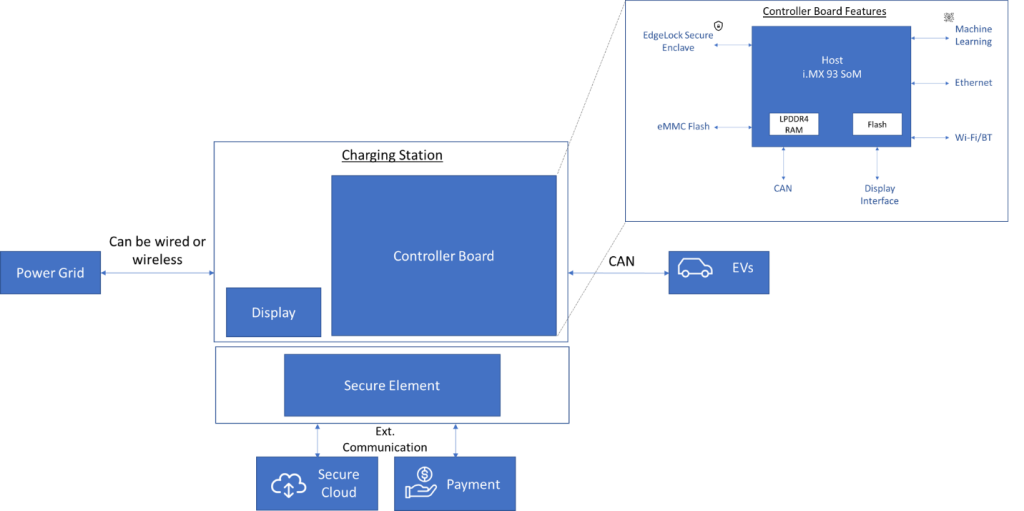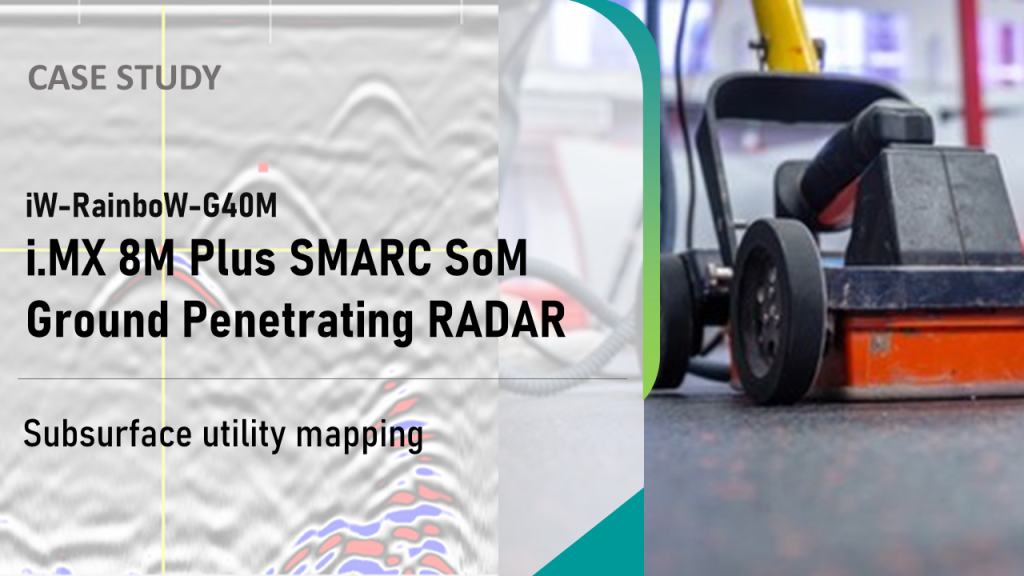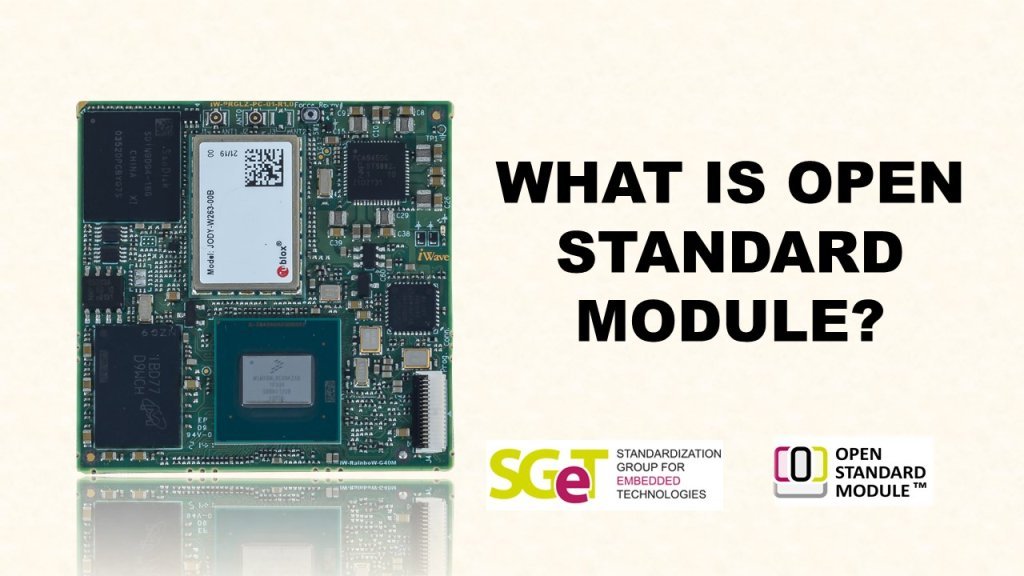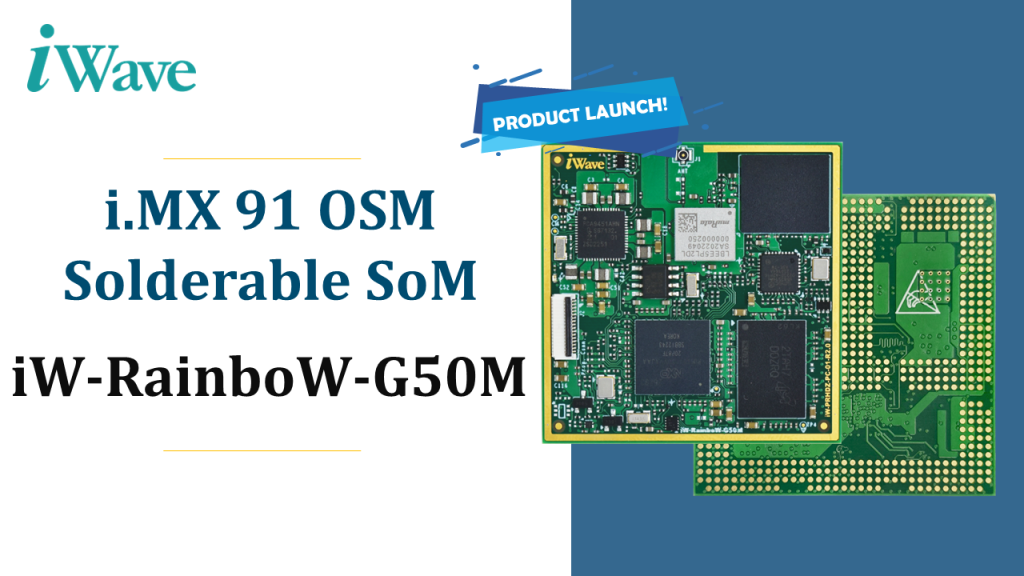- Products
- Automotive
- Avionics
COTS Module
- Agilex 7 SmartNIC Card
- Zynq RFSoC ADC DAC PCIe Card
- ZU7/ZU5/ZU4 PCIe SmartNIC Card
- ZU19/17/11 PCIe SmartNIC Card
- PCIe Switch Module
- PCIe to SD 3.0 M.2 Module
- Kintex-7 PCIe Card
- Zynq ZU7/ZU5/ZU4 3U-VPX
- Virtex UltraScale+ 3U VPX
- Kintex UltraScale+ 3U VPX
- Zynq ZU19/17/11 3U VPX
- Kintex-7 3U VPX Card
- VITA 57.4 FMC+ Loopback Test Module
- VITA 57.1 FMC Loopback Test Module
- PCIe Gen4 x8 FMC Module
- PCIe Gen4 x16 FMC+ Module
- PCIe Gen3 x8 FMC Module
- Quad QSFP28 FMC+ Module
- FMC Add-On Cards
- IP Cores
- ODM Solutions
- Custom Design
- Company


Get a Quote
Please fill in the form and we will get back to you soon!
We appreciate you contacting iWave.
Our representative will get in touch with you soon!

Get in Touch
We appreciate you contacting iWave.
Our representative will get in touch with you soon!
Thank you for subscribing to our newsletter!
i.MX 93 System on Module Paving the way for Advanced EV Charging Systems
The Electric Revolution
The shift towards electric mobility has brought about a significant transformation in the automotive industry. Charging electric vehicles (EVs) requires more than a simple power socket in a driveway. It requires enhanced grid management systems, more efficient chargers, and the integration of home energy management solutions. As a result, the demand for efficient and widespread EV charging stations has never been greater.
In response to this growing need, semiconductor technology has played a pivotal role in advancing the capabilities of EV charging stations. One key building block is the i.MX 93 applications processor, a versatile and powerful system-on-chip (SoC) developed by NXP Semiconductors. In this article, we will explore the reasons why i.MX 93 and i.MX 93 powered System on Module is an ideal choice for design of an EV charging stations.
The EV Charging Systems
Electric Vehicle Charging Systems are typically made up of at least one smart controller block and a power socket board, which are either combined or work as standalone boards. The Power Socket board ensures the safe and precise measurement of energy transferred to the vehicle, in full compliance with regulations and standards. The controller board will use both the security and external communications blocks to manage the main functions and services, such as high-level communications as well as running the protocols stacks used in the electric vehicle charging equipment.

Fig: System Level View of EV Sourcing Equipment
To streamline the design and development of EV Charging Stations, the controller board can be powered by the i.MX 93 applications processor-driven embedded computing platforms like a SoM. The i.MX 93 offers a wealth of advantages, including high-performance computing capabilities, advanced security features, robust connectivity options, energy efficiency, scalability to adapt to diverse charging station requirements, and compatibility with multiple operating systems. The i.MX 93 stands out as a versatile and reliable solution to power the future of electric mobility.
Introducing i.MX 93 System on Module
The most recent addition to our lineup of System on Modules (SoMs) features the latest member of the i.MX 9 applications processor series, available in OSM, SMARC, and SODIMM form factors, delivers a rich array of interfaces for extensive application possibilities.
The adoption of a SoM approach offers a multitude of advantages, significantly simplifying the product design cycle. By leveraging this approach customers can focus on the core competencies and features of their product, ultimately reducing their time to market with reduced development cost.

- i.MX 93 Applications Processor Family
The i.MX 93 processor-powered SoM offers a strategic advantage in the field of EV Charging due to its unique integration of Arm Cortex-A55 application cores and an Arm Cortex-M33 MCU core. This configuration facilitates seamless partitioning and application design, accommodating real-time requirements and high-level functionality with ease. i.MX 93 delivers efficient machine learning acceleration and advanced security with an integrated EdgeLock secure enclave to support energy-efficient edge computing. - External Communication
From a system-level perspective, EV charging stations or EV sourcing equipment should incorporate external communication features to ensure compatibility across diverse systems and geographical regions. This could include an ISM or cellular technologies, implemented using the LBEE5PL2DL-921-based Wi-Fi + Bluetooth module available in the i.MX 93 SoM. LBEE5PL2DL-921 module is compliant with IEEE802.11a/b/g/n/ac/ax, SISO, and Bluetooth specification v5.3. - Achieving High-Level Security
The i.MX 93 incorporates a comprehensive security framework designed to ensure the protection of sensitive data and secure authentication. At its core, the Advanced High Assurance Boot (AHAB) feature rigorously controls access and code execution, while the Secure Debug, Secure Lifecycle Management, and On-the-Fly Decryption enhance security throughout the device’s lifecycle, safeguard data during storage and transmission, and enable secure development and debugging. As a result, it enhances the end-to-end security for exchanging sensitive information, including billing data and managing data exchange between the vehicle’s onboard charger (OBC) and backend servers.
The EdgeLock secure enclave is a ready-to-use secure element that establishes a root of trust at the IC level and ensures comprehensive end-to-end security from edge to cloud. It enables robust protection against the latest attack scenarios. Users can enjoy this security without the need to write security code or manage crucial keys and credentials.Intelligent charging stations are usually combined with smart meters, where the connectivity between the consumer, the charging station, and the cloud is typically handled via Ethernet, Wi-Fi, or other wireless technologies. i.MX 93 SoM supports both wired and wireless connectivity options like Dual Ethernet, Wi-Fi 6, Bluetooth 5.3 & IEEE802.15.4 connectivity options allowing seamless connectivity between the parties. Due to the increase in the amount of complexity of data handled, smart meter gateways require strong security features and secure authentication to the network and the end user and data.
Protocol stacks such as ISO 15118 and OCPP (open charge point protocol) can be easily integrated into the i.MX 93 provides a comprehensive interface to control the power consumption of charging procedures for electric vehicles. ISO 15118, for instance, enables vehicle-to-grid communication and handles key functions including authorization, charge initiation and termination, demand and availability exchange, charging profiles, and tariff management. On the other hand, OCPP enables efficient charge point management, influencing charging processes from the local charging station to centralized charge management in the cloud. This includes setting charging schedules, monitoring power consumption over time, initiating or stopping transactions, managing authorization, utilizing metering for billing, and even reserving charge points.
- Low-Power Modes
The i.MX 93 System on Module uses one PCA9451 PMIC module for power management. The PCA9451A is a single-chip power management IC (PMIC) designed to support i.MX 93x family processor in both 1-cell Li-Ion and Li-polymer battery portable applications and 5 V adapter non-portable applications. The device provides six high-efficiency step-down regulators, three LDOs, one 400 mA load switch, a 2-channel level translator, and a 32.768 kHz crystal oscillator driver. - Display Control
The MIPI DSI interface, available on the i.MX 93 SoM plays a crucial role in enhancing the functionality of displays used in EV charging stations. This interface enables seamless connectivity and communication between the SoM and the display, ensuring that essential information, such as charging status, power consumption, and user instructions, can be vividly and efficiently presented to users.The MIPI DSI interface not only ensures high-quality visual output but also supports the integration of touchscreens, enabling user interaction and providing a more intuitive and user-friendly experience at EV charging stations.
The evolution of EV charging infrastructure is critical to the widespread adoption of electric vehicles—solutions like the i.MX 93 SoM, are at the forefront of addressing the challenges and requirements of the EV charging ecosystem. With its focus on efficiency, security, and adaptability to evolving technology, the i.MX 93 SoM plays a vital role in making electric vehicles more practical, accessible, and sustainable.
To learn more, drop us an email at mktg@iwavesystems.com.
Keep Reading
iWave is an embedded systems engineering and solutions company, designing solutions for the Industrial, Medical, Automotive and Avionics vertical markets, and building on our core competency of embedded expertise since 1999. Read More…
Newsletter
Copyright © 2022 iWave Systems Technologies Pvt. Ltd.





